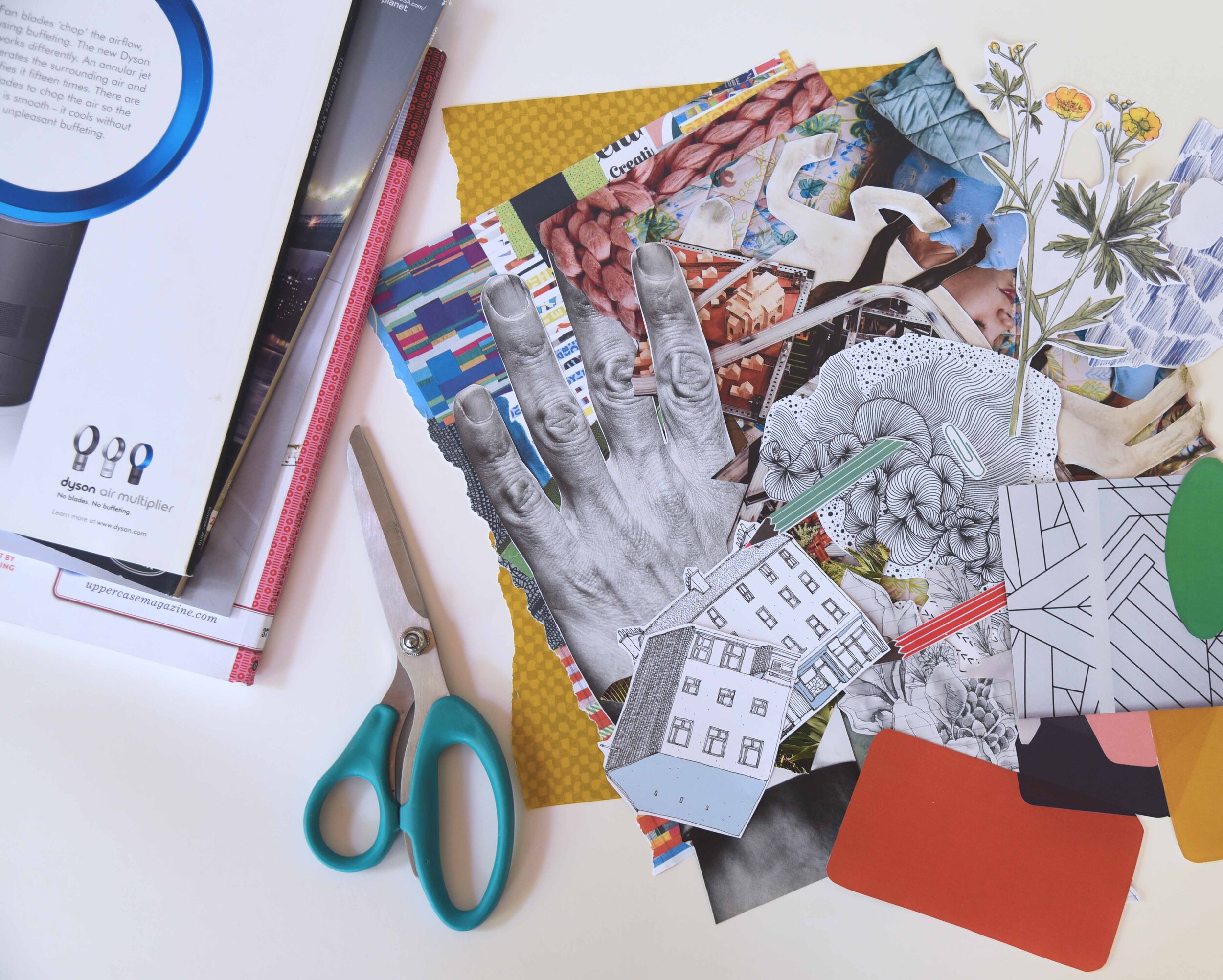Paper Weaving
Exhibition: Altered Realities
Artist: David Foxcroft and Kristine Zingeler
Overview
Weaving is a method used in textile production in which two distinct sets of yarn or thread are interlaced at right angles to form fabric. Similar to a collage, weaving can create a very intricate and complex visual design based on the pattern in which we layer the materials. This project uses paper to explore basic weaving techniques to create a complex paper design.
Objectives
Be introduced to basic weaving technique
Develop fine motor skills
Learn how to take and evenly divide measurements
Learn basic weaving terminology:
Warp - vertical or longitudinal strips
Weft - horizontal or lateral strips
Materials
Coloured Construction paper
Cardstock for weaving base
Old magazines
Exacto or utility knife
Ruler
Glue
Pencil
Scissors
Instructions:
Step One
Search through magazines, start collecting and cutting out imagery that is interesting to you.
Next, cut random shapes from coloured construction paper. Depending on size you will only be using 3-4 shapes. Selectively choose from your cut out imagery and glue them on to your shapes.
Step Two
To prepare your warp: Take your base paper and cut evenly spaced vertical slots with an exacto knife. Slot size can vary based on personal preference but 1/2” is recommended. Make sure you stop cutting 1 inch from the top and bottom of the paper.
Participants can measure slots and cut using a ruler as a guide or alternatively, use a template easily found online by searching “paper weaving template”, then print.
If scissors are preferred instead of an exacto; use a pencil to mark your vertical lines then fold paper in half horizontally. Follow your pencil guides and cut with scissors.
Note: Younger participants should have an adult help with this step.
Step Three
With you paper base in front of you, start pulling your first shape under and over the slots. Alternate pulling over and under with each new shape to create a woven texture. Continue until slots are full.
Variation
Try weave paper strips in combination with the shapes:
Cut paper strips that are the minimum width of your base paper. It is recommended that you cut longer strips as you can always trim them later. You may choose to cut strips out of old magazines and/or coloured construction paper. You can try a combination of both and explore how it effects the overall design.




